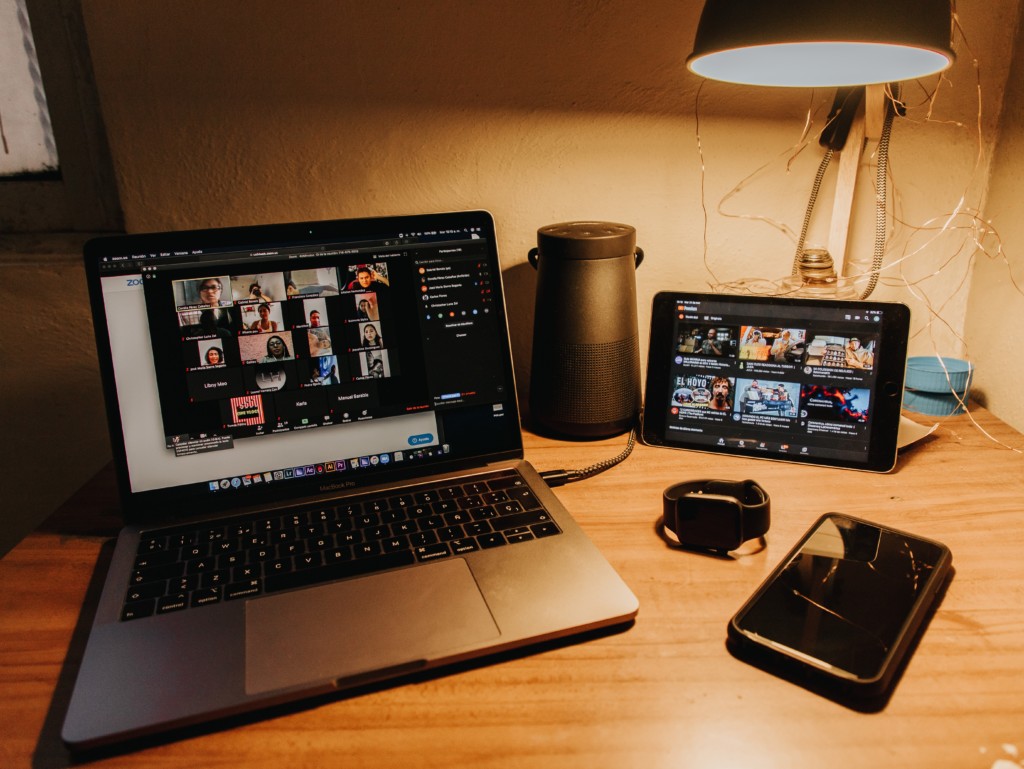Gamified Workplace 2022: A Back-to-Office Approach in Reintroducing Collaboration and Teamwork Among Employees

Many people are looking forward to 2022 because everyone can get a fresh start after two years of lockdown due to the pandemic. The workplace setting has changed dramatically in a short time, and it has impacted many businesses in delivering results and accomplishing goals. A lot of organizations adopted work from home settings to continuously bring service to the people. Others sought after solutions to gamified workplaces. Though it’s a tough transition because not everyone is ready for it, businesses consider it one of the best decisions. Now that everyone returns to their offices. One of the main challenges is making collaboration and teamwork in the new hybrid work model as effective as before the pandemic and remote. Since most work settings became gamified, it’s rightful to revisit approaches to collaboration and teamwork inside an organization. Likewise, see how gamification can be beneficial to managing employees on-site and remote and dealing with returning employees who will adopt this new work model. In this blog post, we’ll share insights about:
- Hybrid work model and its features
- Importance of teamwork and collaboration in the new hybrid work setup
- How to adopt the hybrid work model
- Tips in adapting the hybrid model to strengthen collaboration and teamwork in a gamified workplace
What’s in store with the Hybrid Work Model?
Before the pandemic, employees were engaged in 9-5 working hours. Yet, since the lockdown, companies have started to adopt alternative work arrangements, which have changed the work setting landscape. A hybrid work model enables employees to work on-site for a couple of days, and the remaining part of the week will be remote work. This working model can be fully remote or a combination of remote and on-site working.  Most of the employees benefited from the new hybrid work model because it offers a work-life balance. They get to finish many tasks in the most productive hours while spending time with their families, do things they want to do like starting or going back to their hobby or start a small business. Based on Webex dimension research, 92% of employees have health and safety concerns in returning, which most likely made the hybrid work model a favorable work setup. The Wakefield Research survey revealed that 47% of employees are looking for companies that offer a hybrid work model for the following reasons:
Most of the employees benefited from the new hybrid work model because it offers a work-life balance. They get to finish many tasks in the most productive hours while spending time with their families, do things they want to do like starting or going back to their hobby or start a small business. Based on Webex dimension research, 92% of employees have health and safety concerns in returning, which most likely made the hybrid work model a favorable work setup. The Wakefield Research survey revealed that 47% of employees are looking for companies that offer a hybrid work model for the following reasons:
- It allows you to work in the hours where you are most productive.
- Employees have more control over their work schedules. Thus, they can now do things that they couldn’t before, like picking up kids in school, running an errand, being home for a delivery, or looking after their young children at home.
- It reduces the risk of getting exposed to illnesses, now that most companies require full vaccination before an employee can report on-site.
- Employees were able to save gas money or transportation fees and prevent getting stuck in traffic.
 Not only do employees benefit from the hybrid work model, companies too! When planned carefully and strategically, companies can benefit from a hybrid work model in many ways. Such as:
Not only do employees benefit from the hybrid work model, companies too! When planned carefully and strategically, companies can benefit from a hybrid work model in many ways. Such as:
- It opens opportunities for companies to hire talents with appropriate skill sets across the globe to boost their business, expand their ROI, and accomplish business goals.
- Companies can save from costly real estate costs and reinvest cost savings by providing favorable work options to business owners and employees. Such options can be establishing small co-working spaces or constructing satellite offices.
- It makes the transition back to the office more efficient by gamifying business operations that support on-site and remote workers.
- Lessens businesses’ carbon footprint because there’ll be less energy to be used in workplaces where everyone is adopting the new hybrid model.
Another essential feature of the hybrid work model is a gamified workplace. Technology integration to improve communication and business processes is a crucial investment because it will bridge the gap between onsite employees and remote workers across the globe. Plus, business owners need to update their practices to adopt the business operation in various work settings.
Importance of teamwork and collaboration in the new hybrid model
Collaboration and teamwork can boost productivity in the workplace. But with the pandemic, 71% of the HR are more concerned with the cooperation among returning employees this year than pre-pandemic. The interaction of the employees is scheduled rather than spontaneous, and it mostly happens on screen. However, leaders can change it by empowering the employees to make the interaction intentional through modifications on the work arrangements and maximizing technology to improve operations.  According to Alexia Cambon of Gartner Research, teams who collaborate with intention are most likely to achieve high team innovation three times compared to those who chose to be receptive. A survey also revealed that removing distractions from the home office, consistent tools at home and in the office, and the availability of meeting and collaboration technology are needed to improve collaboration in the new hybrid model. According to 45% of workers who responded in the survey, the company should provide video conferencing devices. While 43% of hybrid employees directly request a working space dedicated for collaboration. The other 39% of the workers believed that conferencing devices and digital whiteboards enable collaboration in a hybrid work setup.
According to Alexia Cambon of Gartner Research, teams who collaborate with intention are most likely to achieve high team innovation three times compared to those who chose to be receptive. A survey also revealed that removing distractions from the home office, consistent tools at home and in the office, and the availability of meeting and collaboration technology are needed to improve collaboration in the new hybrid model. According to 45% of workers who responded in the survey, the company should provide video conferencing devices. While 43% of hybrid employees directly request a working space dedicated for collaboration. The other 39% of the workers believed that conferencing devices and digital whiteboards enable collaboration in a hybrid work setup.
How to Adopt the Hybrid Work Model
Adopting the hybrid work model can significantly positively transform your business. That’s why you must choose the right people, processes, and technology to make this work model a success. Involving your employees about the hybrid work model transition plans can help outline the best possible way to implement it while keeping your employees motivated and your business thriving. To guide you on adopting the hybrid work model into your business, here are some ways you can do to make the transition from a traditional to a hybrid set smooth. 
Create a survey to identify your employees’ needs
Speaking with your workforce can help you design the best hybrid work model that fits your business. Employee engagement and involvement in the decision-making increases the chances of keeping the workforce productive and satisfied with their work. That’s because the hybrid work model is designed based on the collaborative ideas of the employer and the employees. You can email the survey to your employees to gauge their attitude towards adopting hybrid models. Make sure to include inquiries that solicit the kind of work setup that makes them productive and unproductive. Sample questions that you can use are:
- How many days in a week do you see yourself working on-site?
- Have you been assigned to a work location far from your home this past year?
- Would you rather commute to work or use the closest co-working space in your area?
Once you receive and interpret your employees’ responses, you’ll get a better picture of whether there’s a need to adopt the new hybrid work model or stick to your current working arrangement. It’s crucial to identify what flexible work arrangements will appeal to your employees to decide how you will design your company’s new alternative work arrangement.
Build the infrastructure and integrate a gamified solution to support flexible work
The hybrid work model will bridge the gap between on-site employees and remote workers. This new alternative work arrangement promotes collaboration and teamwork as it brings together employees from different locations. To make this happen, business owners should start investing in infrastructures and devices to create smooth communication and a harmonious virtual work setting. You can create work schedules to manage and observe the traffic at the workplace and provide employees with better work arrangements. 
Invest in gamification software to gamify workplace
A 2013 Gallup Employee Engagement Survey revealed that only 13% of employees believe that they are engaged with their job roles, while 63% of employees admitted their disengagement in the work they do. Through gamification, businesses can expect an increase in employee engagement, which directly impacts the efficiency of the work culture. Investing in gamified solutions as part of the transition to the new hybrid work model aids in making the employees involved in activities, meeting business goals, and interaction. It increases efficiency in the workplace. It also helps improve the work atmosphere on-site and virtually. Likewise, adopting gamification software for business operations removes on-site and remote employees’ experience at work. It also makes onboarding new hires efficient because they can simulate the job roles before integrating them fully into the business. Plus, gamifying training and workshops encourage participation and engagement, boosting employee productivity whether they work on-site or remotely.
Make an Amazing Gamified Workplace Experience
Just because your employees aren’t in the office regularly, you’ll forget about the perks they receive before the pandemic. Being consistent with what your employees receive, even if they work remotely, can help retain their interest in performing their roles. Likewise, it gives employees something to look forward to, which decreases the chances of no-shows in the office or employees resigning.
Continuously Do the Survey and Collect Feedback
Improving the workplace culture doesn’t end with implementing a new hybrid work model and adopting gamification to enhance the workplace experience. It should be developed constantly using feedbacks and observations. It would greatly help businesses identify which department or processes should be improved, removed, or retained. 
Tips in adapting the hybrid model to strengthen collaboration and teamwork in a gamified workplace
The pandemic is a great challenge to many businesses. However, it’s more challenging to rebuild collaboration and teamwork with an alternative work setup implementation in a workplace. Though many organizations are leaning towards adopting the hybrid work setup model while gamifying business processes and customer service, transition difficulties are inevitable. However, we’d like to share some tips that can help smoothen the transition. These are:
- Incorporate work settings and innovations while focusing on three key concepts: engagement, equity, and convenience. Businesses can repurpose their physical space to a more conducive work setting where onsite and remote workers can collaborate. Investing in devices, software, and lighting to improve the video conferencing experience helps make meetings, conferences, and other activities more engaging. Likewise, provide separate devices, whiteboards, and various software solutions to promote employees’ seamless hybrid collaboration experience.
- Make use of open collaboration spaces. Gone are the days where employees are cramping on small office space, completing their tasks in their cube-like workstations. With the hybrid work model, open collaboration spaces offer flexibility as it doesn’t require fixed features. Emergency meetings, making important announcements, or small catch-up with flexible furniture and easy-to-access tech make communication more engaging and experiential.
- Promote the “we” and “me” balance. Due to the pandemic, collaboration time dropped by 37% as companies put more employees into full-time work-from-home setups. And since restrictions have been lifted and many companies are opting for hybrid work set up, business owners are finding ways to boost collaboration and teamwork in returning employees and remote workers.
Through gamified solutions, it makes business processes convenient as it caters to in-house and remote staff. It promotes effective collaboration where employees come together to brainstorm ideas and work as a team. But also allows moving apart to focus, process ideas, and internalize the next course of action before implementing an important project.
In Conclusion
Pandemic has taught us what matters in the lives of many and what to prioritize. It became an eye-opener to many industries. As a result, new policies are implemented, and new guidelines are designed to benefit the workforce and the industry. The lockdowns made businesses realize the importance of accelerating business processes and operations through the integration of gamified solutions. Through innovation and a new hybrid work setup, collaboration and teamwork became possible and convenient. Hence, even though businesses operate with a skeletal workforce, they can still provide services with quality and efficiency while meeting business goals slowly but with consistency. Looking for ways to gamify your workplace as preparation for opening up your business to returning employees? Contact our Cluehub expert today for a consultation.
Gamification, Serious Games or Game-Based Learning?

Gamification Use Cases: How to Gamify Corporate Training
Gamification is one of the most potent ways to engage learners. It’s an excellent way for your employees to learn and apply their knowledge in real-world situations. However, it can be hard to get started with gamification because there are many different tools out...
Online Escape Games: An Exciting Virtual Event Add-on or a Good Marketing Study Tool?
Face-to-face events are all fun and memories until the pandemic came. It took away the most exciting parts in every socio-business gathering which are meeting new friends, onboarding fresh investors, and gaining valuable insights that help you improve your business...
Game-based Learning Solutions: Will it Bring Study-Game Balance to Students?
Games pique the interest of many students, especially if it's visually appealing, tasks are challenging, and is not too academic. However, too much of it prevents the students from achieving certain learning outcomes, which forfeits the core objective of gamifying...



